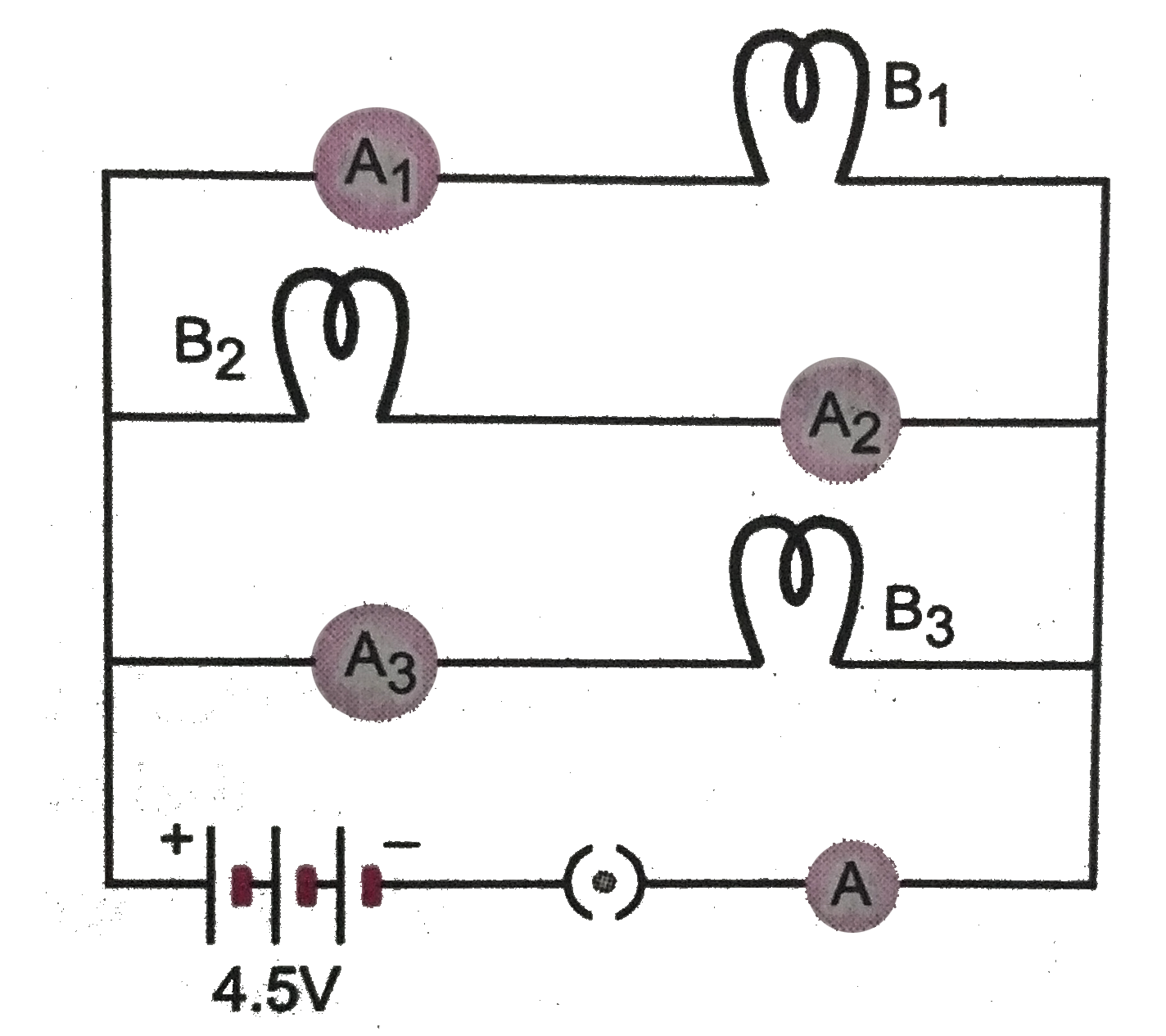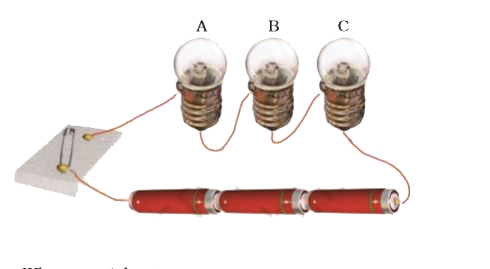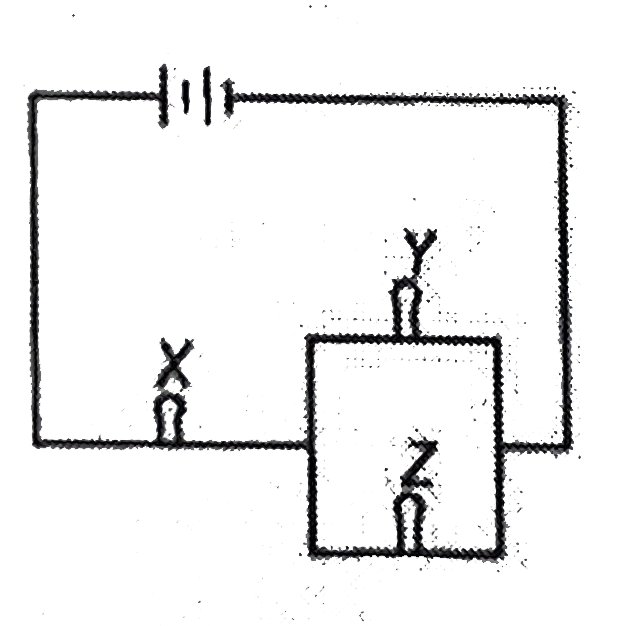B1,B2andB3 are three identical bulbs connected as shown in (fig. 3.46). When all the three bulbs glow, a current of 3A is recorded by the ammeter A.
(i) What happens to the glow of the other two bulbs when the bulb B1 gets fused ?
(ii) What happens to the readings of A1,A2,A3andA when the bulb B2 gets fused ?
(iii) How much power is dissipated in the circuit when all the three bulbs glow together ?
 .
.
(i) Since bulbs B1,B2andB3 are in parallel, when bulbs B1 gets fused, the pd across B2andB3 does not change. Thus, the glow of bulbs B2andB3 remains unchanged.
(ii) When the bulbs B2 gets fused, no current flows through A2 and as such it shows zero reading. Since the total current through B1andB3 in parallel id 2A (as 3 A is the total current which flows when all the three bulbs, i.e., B1,B2andB3 are in parallel), current through B1orB3 is 1A (as their resistances are equal).
Thus, A1 shows A,A2 show zero, A3 shows 1AandAshows2A.
(iii) When all the three bulbs are glowing together, I=3AandV=4.5V.
Power dissipated in the circuit, P=VI=(4.5V)(3A)=13.5W.
Topper's Solved these Questions
- BOOK - PRADEEPCHAPTER - ELECTRICITYEXERCISE - (Exemplar)Long Answer6videos
ELECTRICITY
- BOOK - PRADEEPCHAPTER - ELECTRICITYEXERCISE - (Additional)Very Short Answer47videos
ELECTRICITY
- BOOK - PRADEEPCHAPTER - ELECTRICITYEXERCISE - NCERT Exercise18videos
ELECTRICITY
- BOOK - PRADEEPCHAPTER - MAGNETIC EFFECTS OF ELECTRIC CURRENTEXERCISE - Mock Test21videos
MAGNETIC EFFECTS OF ELECTRIC CURRENT
Similar Questions
B1,B2,B3 are three identical bulbs connected as shown in figure. Ammeters A1,A2,A3 are connected as shown. When all the bulbs glow, the current of 3A is recorded by ammeter A.
(i) What happens to the glow of the other two bulbs when bulb B1 gets fused?
(ii) What happens to the reading of A1,A2,A3 and A when the bulb B2 gets fused?
(iii) How much power is dissipated in the circuit when all the three bulbs glow together?
 View Solution
View SolutionWhen an electric bulb glows
View Solution
Knowledge Check
- Question 1 - Select One
What will happen to the other two bulbs if the bulb B3 gets fused?

AAll the bulbs will be fused.BOther bulbs will glow with same brightness.COther bulbs will glow with more brightness.DOther bulbs will glow with less brightness. - Question 2 - Select One
What happens when a bulb gets fused?
AFilament becomes coldBFilament gets brokenCFilament becomes thickDFilament becomes thin - Question 3 - Select One
What happens when we switch on a light bulb?
AThe filament or wire inside it burns with a yellow flame.BThe filament gets active and glows.CThe filament or wire inside it gets heated and glows.DThe wire inside it burns.
How does an electric bulb get fused ?
View Solution
If the wattage of each bulb is 1.5 W, how much reading will the ammeter A show when all the three bulbs glow simuteously.View SolutionThree bulbs A, B, C are connected in a circuit as shown in Figure 14.2. When the switch is ‘ON’
 View Solution
View SolutionIf A and B are identical bulbs, which bulb glows brighter?
 View Solution
View SolutionThree bulbs X, Y and Z are connected as shown in figure. The bulbs Y and Z are identical. If bulb Z gets fused, then
 View Solution
View Solution

